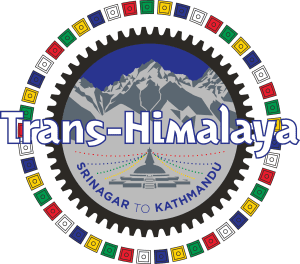Blog
A Trio of Heavenly Indian Hill Stations
The second section of the 2019 Trans-Himalaya Cycling Expedition runs from Manali to Rishikesh and is aptly named – Heavenly Hill Stations. Our route will take us through 3 of India’s most beautiful colonial hill stations. They were established as high-altitude towns to be used as a place of refuge to escape the blistering summer heat and dust of plains during the British Raj and were designed to, as much as possible, replicate the climactic conditions back in the British Isles. However, after the 1857 Mutiny, these towns also served as vital centres of political and military power.
Manali

The small town of Manali is situated in the Kullu Valley, often referred to as the ‘Valley of the Gods’. The story of its founding goes like this – One day Vaivasvata, the seventh incarnation of Manu found a tiny fish in his bathing water. The fish told him to look after him with devotion for one day it would do him a great service. Vaivasvatatava cared for the fish till the day it grew so huge that he released it into the sea. Before departing the fish warned Manu of an impending deluge when the entire world would be submerged and bade him to build a sea-worthy ark. When the flood came, Vaivasvata and the Seven Sages were towed to safety by Matsya the fish – which is regarded as the first avatar of Lord Vishnu. As the waters subsided, Manu’s ark came to rest on a hillside and the place was named Manali.
Its location marks the beginning of an ancient trade route to Ladakh and from there over the Karakoram Pass on to Yarkand and Khotan. The British made it into one of their hill stations in the 1800’s. During their rule, they introduced apple trees to the area and to this day, the fruit remains the best source of income for the majority of the locals, although tourism is growing quickly. The Brits also introduced rainbow and brown trout into the nearby lakes and streams.
Today, the town is a popular adventure destination with trekking, paragliding and whitewater rafting all available. A pleasant 2km walk out of Manali will take one to the sacred Hadimba Temple (1553) where pilgrims come to honour Hadimba, the demon wife of the Pandava Bhima from the Sanskrit epic, the Mahabharata. Nearby Gatothkach, the warrior son of the Pandava Bhima and his demon wife Hadimba, is worshipped in the form of a sacred tree. Old Manali is worth exploring with its ancient stone and wood houses and is the location of the Manu Maharish Temple, the alleged site where Manu’s ark came to rest after the great flood. The Manali Gompa is world famous for its large statue of Buddha and sublime wall paintings. Finally, one can relax at the Vashist Hot Water Springs and Temple, dedicated to the local patron saint, which is 3km from Manali, across the Beas river.
RELATED
TOUR

Trans-Himalaya
This ride will take cyclists from Kashmir to Kathmandu. Along the way they will pedal over passes as high as 5,000m, spin past remote forts and Gompas...
Shimla

Shimla, the capital of the Indian state of Himachal Pradesh, is named after a Hindu goddess, Shyamala Devi, an incarnation of Kali. Attracted by the dense forest of pine, deodar, oak and rhododendron and its cool climate (it stands at 2200m) the British took control of the area in 1815. Prior to that there was only a temple and a few scattered houses. As more and more British officers and bureaucrats decided to spend their summers in the area, it became famous for balls, parties and other festivities. Rudyard Kipling wrote that it had a reputation for “frivolity, gossip and intrigue”. In fact, the writer used the town as the setting for his books, Kim & Plain Tales From The Hills. In 1864, Shimla was officially made the ‘summer capital’ of British India.
The railway route from Kalka to Shimla was completed in 1903 and, with more than 806 bridges and 103 tunnels, was touted as an engineering feat, known as the “British Jewel of the Orient”. In 2008 the line became a UNESCO World Heritage Site and is definitely worth a ride. It has a ruling gradient of three percent and 917 curves, the sharpest of which is 48 degrees. One interesting story is that during its construction, British Colonel Barog miscalculated tunnel construction and the ends failed to meet in the middle. Humiliated, he shot his dog, then himself and is buried at the entrance to his mistake. A new tunnel was successfully completed with the help of a local ascetic Bhalku who used a long and solid wooden staff to hit the ground and divine the correct alignment! He also helped with the alignment of several other tunnels on the line and was eventually awarded a medal and turban by the British Viceroy.
The town is home to a number of buildings in the Mock Tudor and Neo-Gothic styles of architecture dating from the colonial era, as well as multiple temples and churches. The centre of Shimla is the Mall, which meanders along the mountain ridge for 7kms. There is no traffic and a walk along its length will allow one to take in sights like the Viceregal Lodge (LP describes it as “a cross between Harry Potter’s Hogwarts and a Scottish baronial castle’), the Town Hall and the Neo-Gothic Gorton Castle. At the east end one can make the strenuous 30 minute hike up to Jakhu Temple for some incredible views of the snow-capped Himalaya. The temple itself is dedicated to the Monkey God, Hanuman. Appropriately there are hundred of monkeys in the area as well as a 33m statue of Hanuman, in pink, no less.
Mussoorie

Known as the ‘Queen of the Hills’ for its spectacular views of snow-covered Himalayan peaks as well as over the Doon valley, Mussoorie was established by the British in 1823 after Lt. Frederick Young of the East India Company, who came to the are to shoot game, decided to build a hunting lodge there. Its name appears to be a derivation of ‘mansoor’, a shrub which is indigenous to the area. Mussoorie was the intended terminus of the Great Trigonometric Survey of India in 1832 that began at the southern tip of India. It was also known for spirits. In 1832, Sir Henry Bohle started ‘The Olde Brewery’ on the outskirts of town. However, he argued with the aforementioned Lt. Young about licensing and in 1834 the facility was shut down. It was reopened in 1850 when Sir John McKinnon, the brother-in-law of Sir Henry Bohle, restarted the brewery, being the first in British India. It is said that the famous Indian poet, Mirza Ghalib, was a big fan. Shipping the big barrels of beer to their destinations on carts gave name to the town’s Cart MacKenzie Road which still exists today.
Under British rule, Mussoorie, in 1827, became a convalescent centre for soldiers. It was also the temporary home to the last Maharaja of Punjab, the child King, Maharaja Duleep Singh, son of the great Maharaja Ranjeet Singh. After the two Anglo-Sikh wars, the Punjab was ready for annexation by the British and Duleep Singh was forced to sign away his kingdom and wealth, including the famous Koh-i-noor diamond, to the Governor General of India, Lord Dalhousie. Before he left for England, the Maharaja was kept at the Castle Hill Estate near Landour Bazaar in Mussoorie. His days there came to an end on April 19, 1854 when he was deported to England where he lived in exile for the rest of his life. During the 1959 Tibetan Rebellion, the Central Tibetan Administration of the 14th Dalai Lama was at first established in Mussoorie while the first Tibetan school was established in Mussoorie in 1960. Today, some 5,000 Tibetans live in Mussoorie.
Considered by many to be the honeymoon capital of India, one can enjoy a 3km walk along Camel’s Back Road from Kulri Bazaar to Gandhi Chowk, passing a rocky outcrop in the shape of a camel’s hump. Gun Hill is a wonderful place to look out over the Indian plains and can be reached by cable car from the Mall Road. There is also the opportunity to visit the remains of the building and laboratory of Sir George Everest, the Surveyor-General of India from 1830 to 1843. Mount Everest, the world’s highest peak is named for him. The renown Landour Language School offers classes in Hindi, Urdu, Sanskrit and the local dialect of Garhwali.
 REGISTER NOW
REGISTER NOW




Leave a Comment for "A Trio of Heavenly Indian Hill Stations"